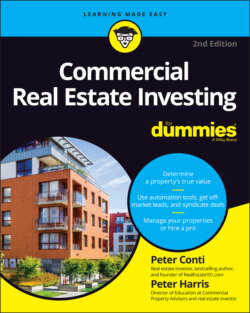Читать книгу Commercial Real Estate Investing For Dummies - Peter Harris - Страница 61
Approach #2: Income
ОглавлениеWhen you get out into the real world of commercial real estate, you’ll discover that commercial properties are chiefly valued by the amount of income they bring in. (That's why they're called income properties!) To be more precise, it’s the net operating income that’s most important.
The income approach of valuing a property can be used when accurate financial and operating data are available on the property. This approach is based on the capitalization rate being calculated for a property. To calculate the cap rate, you must know the property’s net operating income and sales price.
After you calculate the cap rate of a property, the next step is to compare the cap rate to similar properties’ cap rates. Every area in your city that has commercial properties has a cap rate stamped on it. Your job is to find those other properties and their cap rates and get the average. That average cap rate percentage is what you use in calculating property value when you know the net operating income.
Take a look at this example: You want to value a 50-unit apartment building. You calculate the net operating income to be $180,000. Your research from previous apartment sales tells you that the going cap rate for the neighborhood in which the property is located is 8 percent. Now, if you know the net operating income and the cap rate, you can figure out the sales price. Here’s how:
Cap rate = net operating income ÷ sale price
7 percent = $180,000 ÷ sale price
Sale price = 180,000 ÷ 7 percent = $2,571,428
Now you know that the property should be valued at or estimated to be $2,571,428, based on average cap rates in the area and the property’s net operating income. We love dealing with numbers in the millions. At times it feels like we're playing Monopoly!
Every investor who wants to find out how to estimate values of income-producing properties should know and understand the basics of the income approach. It’s an indispensable tool that investors, real estate agents, and lenders use often.
